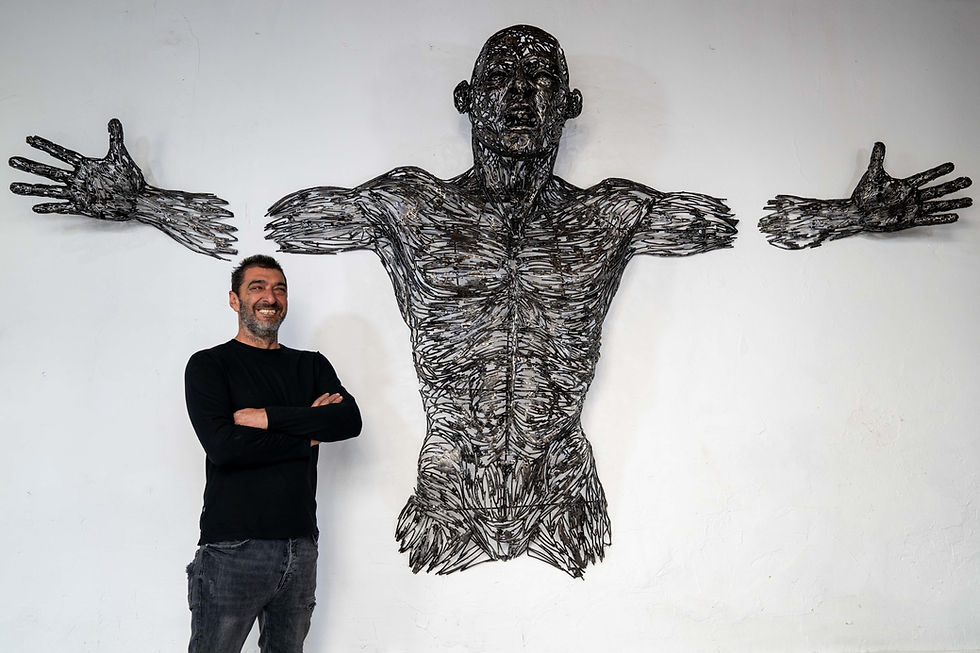Interview with Panicos Spanos
- Spanos Art Studio

- Jan 30, 2021
- 3 min read
Updated: Dec 14, 2022
Cluster London Journal | 30th January, 2021
My practice is informed by constant experimentation. I believe that in order to grow as an artist you need to push your material’s limits and in extension, your own artistic capabilities. Only then will you realize that there is so much more you can do; so many more doors you can open. Being complacent is equal to being stagnant. That is why in occasions I use found materials such as CDs- which I melted and incorporated in my metal sculptures- clay, ceramics, metal wire, even stones. Such materials complement my metal figures.

Let us start from the very beginning of your career. What introduced you to metal?
For ten years, I was an artisan manufacturing metal lamps. Of course, the main aspect of my products was their utility. However, I always paid attention to the aesthetic of the lamps, which were becoming more and more artistic. Utility and aesthetics became equally important in my work.

One would immediately think that manufacturing lamps, which falls more into furniture design and the realm of crafts, is completely unrelated to your current practice. Would you say that your previous career helped in shaping your artistic practice as we know it today?
Definitely. That experience introduced me to the main medium I use now: metal. I came to realize the infinite capabilities of metal that go beyond its practical use. Of course, when I decided to go into sculpting I needed to enhance my knowledge in anatomy and different sculpting techniques. Nevertheless, manufacturing metal lamps was definitely the starting point.

Although your signature medium is metal, there are times where you combine it with other materials. Tell me a bit more about your choice in such materials.
My practice is informed by constant experimentation. I believe that in order to grow as an artist you need to push your material’s limits and in extension, your own artistic capabilities. Only then will you realize that there is so much more you can do; so many more doors you can open. Being complacent is equal to being stagnant. That is why in occasions I use found materials such as CDs- which I melted and incorporated in my metal sculptures- clay, ceramics, metal wire, even stones. Such materials complement my metal figures.
One could say that the secondary materials you use and the way you use them is inherent in the practice of craft making. What is your opinion?
I do not believe that we should categorize artistic forms so rigidly, especially now that many artists are rightfully trying to break the barrier between “crafts” and “fine art”. They are all forms of artistic expression. It all depends on what the maker wants to communicate. An obvious example is Pablo Picasso’s ceramics. Materials inherent in craft making such as clay, are important in a sculptor’s learning process. When I was studying under the prolific Cypriot artist Pambos Michlis, I first experimented with ceramics and clay. Working with clay taught me the basics of sculpting such as anatomy and human proportions.

When looking back at your career, what would you say is the main skill a sculptor should have?
In order to be a sculptor you need to be an artisan; especially when using metal. You need a combination of skills. You have to know how to bend the metal, how to manipulate it and bring it to the shape and form you envision.



Comments